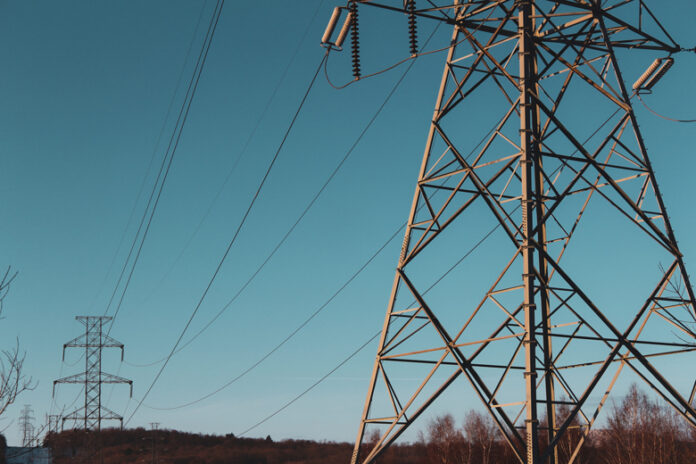Stuart Murphy, Founder & Developer, TPGen24
First the Exxon Mobil documentary and then the BBC’s Drax expose… it would seem we have all been victims of a great international energy hustle for decades. Private profiteers and politicians, either ignorant, uninterested or complicit, have shaped and manipulated our resources and consumption for too long. Now, with a major war raging in Europe, the hens have come home to roost.
But if you thought the age of misleading statements was over, you’d be wrong. Of the many current big claims and ideas to address the worrying gaps in our energy infrastructure, perhaps the most concerning (for me at least) is the notion it’s achievable by ramping up of wind and solar capacity.
While I am not saying other options aren’t being explored, these two intermittent renewables are being prioritised. You only have to look at the Government’s attitude, perfectly encapsulated by The Chancellor in his recent Autumn Statement, who has decided to put all the treasury eggs into offshore wind, carbon capture and Nuclear.
Needless to say there are many in the renewables sector who will have been bitterly disappointed with this outcome.
It’s a narrow and risky approach, especially against the context of climatic and meteorological change. Summer 2022 saw what would be described as a ‘wind drought’, a worrying indication of a global phenomenon known as ‘Global Stilling’. During this time, wind-attributed UK electricity was erratic, with the Base Load gaps propped up by gas and coal.
This situation, likely to get worse as wind speeds continue to drop, showed just how reliant we still are on the fossil fuels global Governments claim they want to eradicate. Importantly, it also highlights that you can increase the number of turbines as much as you want, but if the atmospheric conditions aren’t just right, you’re left with no generation and a gaping power hole.
Sadly, it’s a similar story with solar. Like it or not, we do not live in a country suited to solar generation. Beyond this inconvenient truth, the amount of space needed to reach any significant amount of electricity is ludicrous. Recently it was calculated that approximately 12% of UK land would need to be set aside for solar panels to produce a reasonable enough amount of renewable electricity to deliver a return. It’s simply unfeasible.
Here, it’s important to highlight that I am not anti-wind or solar, I just don’t think they are the silver bullets that many have promised to a public hungry for a solution yet lacking the knowledge to making an informed decision.
The Government’s other main ‘renewable’ card is nuclear and, whilst on paper it’s a carbon neutral solution, in reality it comes with a number of negatives. Looking beyond the sticky issue of waste processing, which the Government is yet to come clean on (yet another ambiguous topic), the sheer financial and carbon costs of building power stations, as well as their relatively short shelf-life, needs to be define properly. Unfortunately, this information is not readily available or forthcoming.
In equal measure, I don’t think those involved in such projects are upfront enough about the timeframes for these facilities coming online. Sizewell C sounds great on paper, yet as we’ve seen with Hinkley Point C, these facilities can take up to 25-30 years to build (and that’s taking an optimistic stance).
It’s frustrating to say the least, given there’s absolutely no need to pull the wool over peoples’ eyes or mislead them. There’s a distinct ‘jobs for the boys’ approach about it, smacking of vested interest, financial or political gain.
As a tidal renewables developer, it’s a disappointing and worrying state of affairs, as the sector niche in which I operate has come up with practical and efficacious solutions to help support the energy mix. My own system has been designed to achieve 100% clean Base Load by manipulating our tidal ranges, of which the UK has some of the world’s best.
Of this latter point, this is no exaggeration. The Severn Estuary, North Wales, Liverpool and Morecambe Bay have ranges second only to Canada’s Bay of Fundy. Controlled correctly, they could produce more than enough energy to power our needs as, after all, water is nature’s battery. Whilst this seems to be relatively well known, my fellow developers and I are relegated to the poor relation status at policy level.
The latest indications from The Government don’t inspire confidence. In fact, it strikes me they’re pursuing the easiest course of action, which will lead to an even more damaging outcome. I fear we’re going to be fed more misinformation in the quest to win the battle, whilst a far greater war roars around them.
Perhaps some reflection over what promises to be a biting winter for everyone nationwide will encourage them to reconsider, particularly those coastal MPs who have so much to gain from tidal energy as a solution.
We have a number of MPs, LAs, and private investors keen to see the potential of tidal unlocked. However, whilst poor-quality information, spurious claims around the emission levels and lack of forwardness around long-term consequences abound, it’s likely we’ll continue to be hustled into a superficially green future with a carbon-heavy underbelly. tidalpower24.com





